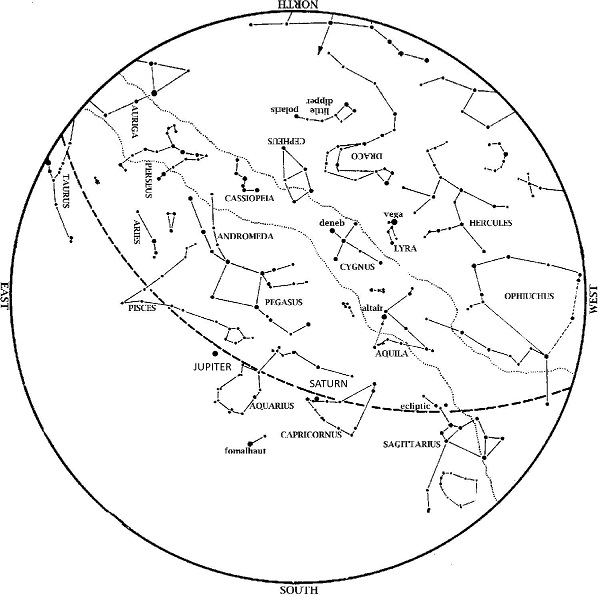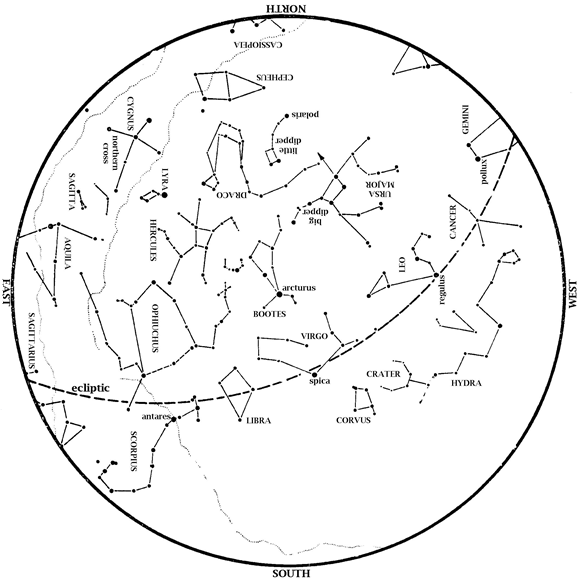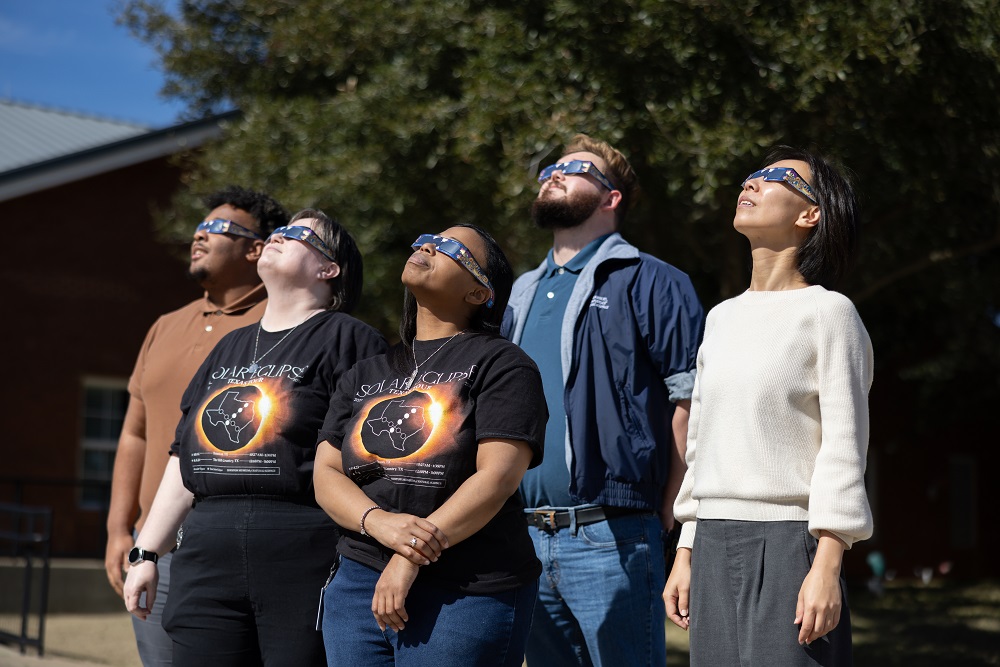Editor’s Note: Look to the skies as HMNS Astronomer James Wooten explains the sky happenings for the month of November, including the highly anticipated rescheduled Artemis I launch.
Jupiter is still up most of the night; look for it in the southeast at nightfall. Unless the Moon is up, Jupiter is the brightest thing in the sky this month.
Saturn remains well placed for observing in the south at nightfall.
Mars is high in the west in the morning sky this month. It also brightens even more; by November 9 Mars is brighter than any star we ever see at night. (It still is not quite as bright as Jupiter). You can also start looking for it in the east in late evening. It rises by 9:12 pm now and by 5:47 (dusk) on November 30.
Venus remains lost in the Sun’s glare this month. It was directly on the far side of the Sun (an alignment called superior conjunction) on October 22.

Constellations in the November southern sky are almost entirely devoid of bright stars. They represent beasts and gods related to water, indicating that they are part of the ‘Celestial Sea’. Examples are Aquarius, the Water Bearer and Pisces, the Fish. Even Capricornus, the Goat, has a fish tail because he’s originally Ea, Babylonian god of the waters. Below Aquarius is the one bright star in this area, Fomalhaut, marking the mouth of the Southern Fish. Ancient Mesopotamians imagined that the Persian Gulf extended upwards into the sky, joining this ‘sea’ of dim stars.
As the autumn ‘intermission’ in between the bright stars of summer and winter continues, Houstonians with a clear southern horizon can try to find a star that few Americans get to see. Due south and very low to the horizon at about 10:00 pm in mid-November is Achernar, 9th brightest star in the sky. It marks the end of the river Eridanus, another of the dim watery patterns that fill the southern autumn sky. If you can find it, Achernar will seem of average brightness because it is shining through so much air. Still, it is a good way to remind yourself that the stars we see depend on our latitude, and that the sky on the Gulf Coast is similar to, but not the same as, what most Americans see.

The Summer Triangle is high in the west. The ‘teapot’ of Sagittarius sets in the southwest. Saturn is almost due south as night falls. Jupiter, high in the southeast, outshines all the stars in the night sky. The Great Square of Pegasus is high in the east at dusk. To the south and east, we see a vast dim area of stars known as the ‘Celestial Sea’, where only Fomalhaut stands out.
Moon Phases in November 2022
1st Quarter Nov. 1, 1:37 a.m.
Full Nov. 8, 5:02 a.m.
Last Quarter Nov. 16, 7:27 a.m.
New Nov. 23, 4:57 p.m.
Sunday, November 6, is the first Sunday of November. Accordingly, Daylight Saving Time ends at 2:00 am that morning. Officially, the time goes from 1:59 am back to 1:00, such that the 1:00 am hour happens twice. Don’t forget to set clocks back one hour on Saturday night, November 5!
The Full Moon of November 8 enters the Earth’s shadow completely, causing total lunar eclipse! Partial phases begin at 3:08 am, when the Moon arrives at Earth’s shadow. Totality begins at 4:16 am, when the Moon is all of the way inside the shadow. Since the Earth’s shadow is larger than the Moon, the Moon goes all the way in and then takes 85 minutes to cross to the other side. It reaches the other side at 5:41 am, so that’s when totality ends. The Moon then emerges from the shadow, producing the partial phases in reverse. It has almost left the shadow completely by moonset at 6:48 am.
Previous attempts to launch Artemis 1, a test flight of the craft that will return humans to the Moon, were scrubbed by leaks and then by Hurricane Ian. NASA plans to try again this month, at 12:07 am Monday, November 14 at Cape Canaveral. Note that that is 11:07pm on Sunday night, November 13, for us. Backup launch dates would be Wednesday, November 16 and Saturday, November 19, both shortly after midnight Central Time.
Our George Observatory is now open every Saturday night for observing! Purchase tickets in advance on our website.
Clear Skies!
Curious to know what the stars showed us last month? Check out October’s sky happenings here.






